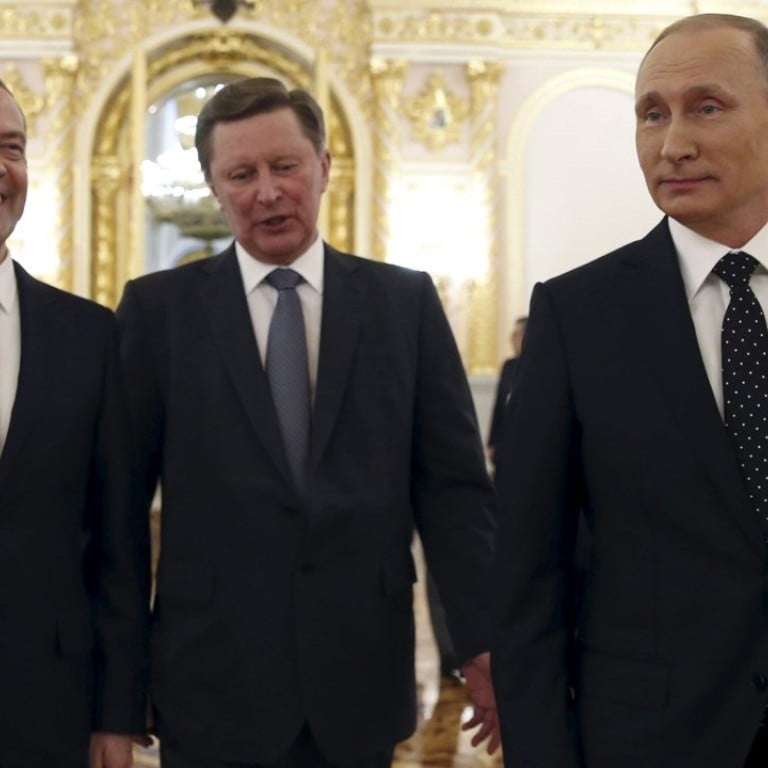
A killer walk: Putin and other ex-KGB have ‘gunslinger’s gait’, study says
Russian President Vladimir Putin walks with a curious “gunslinger’s gait”, a reduced swing in his right arm which he may have acquired through KGB weapons training, an unusual study said.
The research, published Monday in the British medical journal The BMJ, was written by a team of neurologists in Portugal, Italy and the Netherlands.
Specialists in analysing postures and movements that are potential signs of health disorders, they say they were struck by Putin's “distinct” way of walking.
Video footage shows that when Putin walks, his left arm swings normally but his right arm barely moves.
Asymmetrical movement like this is often a telltale sign of Parkinson's disease.

Quite the opposite, in fact: they found he had “excellent motor skills,” as a judo black belt, weight lifter and swimmer, and his handwriting is fast and signature tremble-free.
But their investigations turned up an intriguing alternative explanation in the form of a training manual used by the former Soviet intelligence service, the KGB.
The manual, which they had translated into Dutch, instructs operatives to keep their weapon in their right hand close to their chest and move forward with one side - usually the left - “turned somewhat in the direction of movement.”
The idea behind this approach is to let the agent draw a gun as quickly as possible when confronted with a foe.
Wondering whether prolonged and intensive training in this method could explain Putin's gait, as he was a KGB operative in the Cold War, the team carried out a trawl on YouTube for videos of other Russian officials.
The researchers were “stunned” by what they saw, said Bastiaan Bloem, a professor of movement disorder neurology at Radboud University Medical Centre in Nijmegen, the Netherlands, who led the study.
They also found the characteristic walk in Prime Minister Dmitry Medvedev, in two former defence ministers - Anatoly Serdyukov and Sergei Ivanov - and in Anatoly Sidorov, a senior military commander.
Putin and Ivanov are both former KGB officials, while Serdyukov and Sidorov received military training, the study notes.
Medvedev, in contrast, does not have clear links to either the military or the KGB.
Why, then, would he walk like Putin? The possible answer, says the study: he wants to imitate the boss.
“Substantial evidence suggests that Medvedev is being coached to sound, look, and importantly, walk like the president,” it says.
So Putin's asymmetrical arm swing is unlikely to be the result of disease, but more probably “a behavioural adaptation resulting from military or intelligence training,” says the paper.
“Indeed, we found other examples of a reduced arm swing related to weaponry training: cowboys depicted in movies of the ‘Wild West’ often have a reduced right-arm swing.
“This motivated us to introduce the term ‘gunslinger's gait’ to label this new gait phenotype.”
In Putin's case, the reduced swing could “in part be overlearned,” Bloem said. “It's like saying, ’Look, folks, I've had KGB training, I'm a real man’.”
Bloem said the study is part of a small but growing debate among medical specialists about Putin's unusual walk - a discussion that they admit is conjecture, as there is no access to his medical records or his doctors.
“It is an unusual study, but there is a very serious message to it” about neurological observation, Bloem said.
“His abnormal gait has been noted before. What we are putting forward, but very cautiously, is a new hypothesis.”
Among other suggestions in the debate are that Putin may have suffered some developmental damage in the womb; had polio as a child; had a stroke; or have a condition called Erb's palsy, caused by forceps pulling at his shoulder when he was born.
But these can be discounted, given that Putin clearly has strength and mobility in his shoulder and right arm, and there is no sign of any progressive ailment, as would be the case in Parkinson's, Bloem argued.
Putin, 63, cultivates an image of masculine strength and physical prowess, helped by stunts like horse-riding half-naked and driving a Formula One car.
In 2012, his health became the subject of speculation after he was spotted limping at an Asia-Pacific summit - rumours the Kremlin dismissed, explaining that the head of state had simply had a “minor sports injury.”

.png?itok=arIb17P0)